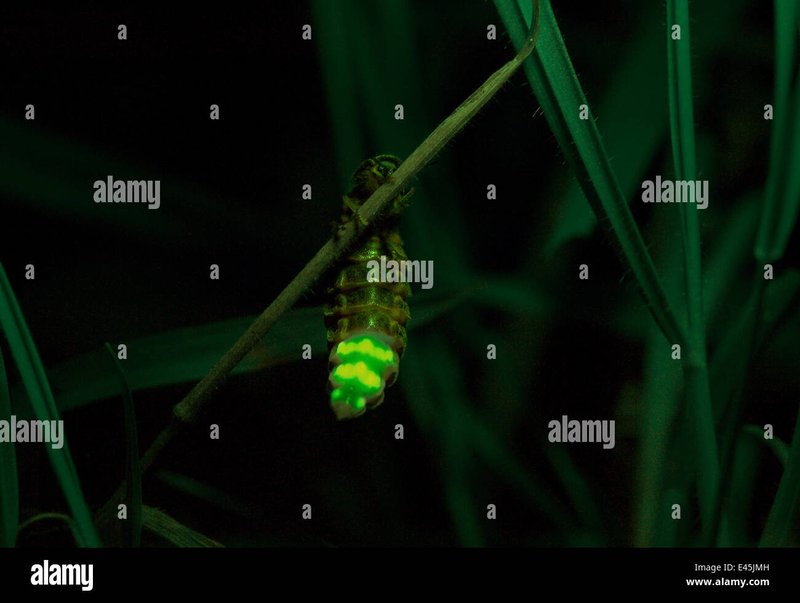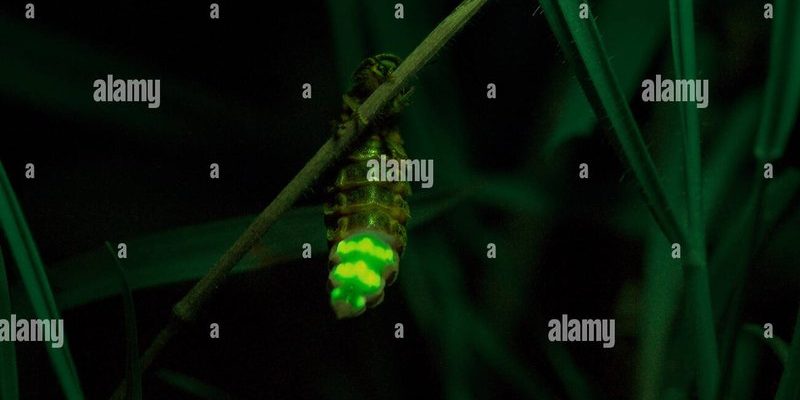
Glow worms are captivating little creatures, but they’re more than just a pretty light in the dark. Their bioluminescence plays a critical role in their life cycle and interactions with other nocturnal insects. This creates a unique web of life and relationships, showcasing the beauty of nature’s design. So, let’s take a closer look at the nocturnal insects that interact with glow worms and how these interactions unfold under the starlit sky.
The Role of Glow Worms in the Night Ecosystem
Glow worms, primarily found in caves and moist environments, produce light through a chemical reaction in their bodies. This glow is not just for show; it lures prey, typically small insects, into sticky silk threads. This hunting technique is a brilliant example of nature’s ingenuity. Imagine setting a beautiful trap that calls out to your dinner!
The bioluminescence of glow worms serves two main purposes: attracting prey and communicating with potential mates. During mating season, these glowing beacons can signal other glow worms, creating a sparkling display in the night. It’s like a neon sign saying, “Hey, look over here!” This mesmerizing display is essential for their reproduction, showcasing the importance of their glow beyond just the predatory aspect.
But glow worms are not the only stars of the night. A variety of nocturnal insects are attracted to their light, forming a complex network of interactions that contribute to their survival.
Moths: The Nighttime Diners
Moths are perhaps the most famous nocturnal insects drawn to the light of glow worms. They have a keen sense of smell and can detect the faintest scents in the air. You might have noticed how moths flutter around your porch light—it’s similar to that instinct but amplified.
When moths approach glow worms, they often become prey themselves. The glow worm’s silk threads are perfect for trapping these unsuspecting diners. For the glow worms, this is a successful hunting strategy, while for moths, it’s a dangerous game of attraction and survival. The interaction is a reminder of the delicate balance in nature—sometimes, the very thing that draws you near can also lead to your downfall.
Interestingly, not all moths fall victim to this light trap. Some have evolved adaptations that allow them to evade capture, like avoiding the sticky silk or varying their flight patterns. This ongoing dance between prey and predator is a powerful part of the ecosystem at night.
Beetles: The Complicated Connection
Beetles, another group of nocturnal insects, also interact with glow worms, though in a slightly different way. Some beetle species, like the *Lampyridae*, are attracted to the glow of glow worms, while others may even compete for the same prey. This makes their relationship with glow worms multifaceted and intriguing.
For example, certain predatory beetles will use the light to find their own meals. They might see moths trapped in glow worm silk and swoop in to snatch them up. This creates a dynamic predator-prey interaction that keeps the ecosystem engaged. The glow worm, while a formidable hunter, must stay alert to avoid becoming prey itself.
This interaction highlights the complexity of night-life relationships. While the glow of the glow worm is enchanting, it also acts as a beacon for various beetles navigating the dark landscape, showcasing the balance of survival and competition in the wild.
Ants may not be the first nocturnal insects you think of, but many species are active at night, and they often find themselves in the vicinity of glow worms. These industrious little creatures work as a team, and their social structure allows them to take advantage of various food sources, including the remains of insects caught by glow worms.
When moths or other insects become ensnared, ants are quick to scavenge the area. They provide a clean-up crew of sorts, ensuring that nothing goes to waste. This scavenging behavior is critical in the ecosystem. It prevents the buildup of dead insects and contributes to nutrient cycling in the environment.
Interestingly, some glow worm species benefit from this interaction since ants help break down organic material, enriching the soil around glow worm habitats. It’s a great example of how even the smallest insects can play a significant role in their surroundings.
Spiders: The Silent Observers
While not technically insects, spiders are prevalent in nocturnal ecosystems and often interact with glow worms. Spiders may wait patiently in the shadows, watching the glow worms attract their prey. Once a moth gets caught, the spider may swoop in to claim the prize.
This predatory relationship highlights how predators can be opportunists, taking advantage of the glow worm’s hunting strategy. The interplay between glow worms and spiders adds another layer to the intricate web of life that exists at night.
Spiders, like orb-weavers, are skilled at spinning intricate webs close to the glow worms. By positioning themselves nearby, these spiders can easily catch any unsuspecting insect drawn to the glow. This creates a fascinating scene: glow worms shining in the dark while spiders wait, playing a waiting game for their next meal.
The Importance of Nocturnal Ecosystems
Understanding the interactions between glow worms and nocturnal insects sheds light on the importance of these ecosystems. Nighttime environments are often overlooked, but they are rich with life, each creature playing a role in the cycle of nature.
Protecting these environments is crucial. Urbanization, pollution, and habitat destruction threaten the delicate balance of nocturnal ecosystems. By fostering awareness and promoting conservation efforts, we can help preserve these magical nighttime habitats and the wondrous interactions that take place within them.
The interconnectedness of glow worms and nocturnal insects serves as a beautiful reminder of how nature works in harmony. Each species has its place, creating a rich tapestry of life that thrives under the cover of darkness.
In essence, the nocturnal world is a vibrant, complex community that thrives when the sun sets. Whether it’s glowing to attract a mate or enticing a meal, glow worms, alongside other insects, illustrate the beauty and intricacy of life after dark.
As we start to understand these interactions better, we can appreciate the roles each insect plays—not just in their survival but in the balance of nature itself. This knowledge can inspire us to be more mindful of our own impacts on the delicate ecosystems around us.
By exploring the fascinating lives of nocturnal insects that interact with glow worms, we can develop a deeper appreciation for the wonders of nature. After all, the night is alive with mystery and beauty, waiting to be explored.

